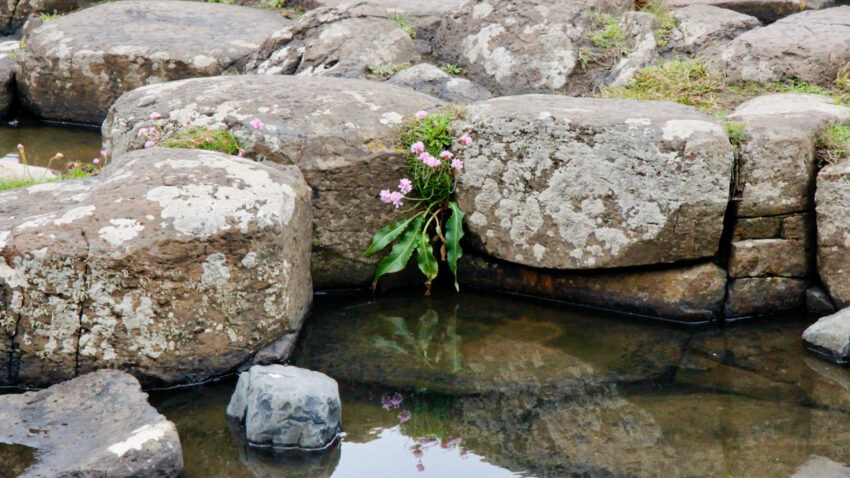
Start-ups ain’t easy. They can be exhilarating, rewarding, exciting, and sometimes terrifying. But they ain’t easy.
Semi-Controllable Challenges
Entrepreneurs face a myriad of challenges with their business models during the start-up process. As they engage their customers, they work at finding a real problem and a solution that fits the customers’ needs. Early on, they also face the challenges of finding the right business partners and building the right team. And then there’s the never-ending challenge of securing the finances and other resources to feed the growing business.
Starting a business is hard enough in and of itself, but start-ups never happen in a vacuum.
“Life Goes On” Challenges
The normal rhythms of life continue no matter what. People get sick. Families fall apart. Personal tragedies happen. Entrepreneurship is a vocation that exists within the context of our complex and often disrupted lives.
When people talk about the challenges of work-life balance, it is almost always unidirectional. How do the challenges of a start-up impact my non-work life and create a work-life imbalance? However, the reality is that challenges in our non-work life can create even bigger challenges in our work as entrepreneurs. Sometimes, the non-business challenges entrepreneurs face can create the biggest risk for growing entrepreneurial ventures.
Tyler King, the founder of a personal chef and catering business called Tastify, faced significant health issues during the early stages of his business that could have led to the failure of his new company. First, he had to endure back surgery, which made the physical work of catering impossible for a time. But, Tyler faced the biggest challenge during his recovery from back surgery:
“After I had gotten through back surgery, I had scheduled a wedding for 150 people. It was going to be at the 30-day mark after surgery. I’d be useful, but I needed to delegate a lot of tasks. But a few weeks after surgery, I got infected. It was pretty serious stuff. My surgeon instructed me to go straight to the hospital because I was vomiting. That’s how I found out that I had a staph infection.
“It was about four days until the event. I had people that had been working for me, but nobody that really seemed to stand out except for this one girl that had worked about five events with me, who just seemed to really care. I gave her a call. It was funny. This girl and I actually used to date. We had stopped dating, and she reached out to me a few months later and said, ‘Hey, I need a job. I know that things didn’t work, but I need a job.’
“So, I gave her a call and said, ‘Hey, so this is going to sound kind of crazy, but I have to go back in and go back under and have the staph infection cleaned out. And I’m going to be on very, very heavy antibiotics for the next few days that are going to make me very sick. And we have a wedding for 150 people this weekend. I have some of the food orders in. I know you’ve never been to this venue, I know you’ve never met half my employees, and I know you’ve never met this client, but I need you to handle this for me.'” (from “Tyler King” in Entrepreneurial Voices).
Tyler overcame this set of health challenges and now runs a successful business. How did Tyler do it? One word: resilience.
Resilience
Experts are paying a lot of attention to the importance of resilience in entrepreneurs’ success. Researchers examining resilience find that positive personality, motivation, confidence, focus, and perceived social support all play key roles in protecting people from the negative effects of stressors (Fletcher and Sakar 2012).
Victoria Usher, founder and CEO of GingerMay., suggests that there are three specific steps an entrepreneur can take to improve their resilience:
- Face your challenges head-on. In the example of Tyler King, he did not wallow in his health challenges. He faced them head-on and sought solutions to make it through each challenge.
- “Innovation”. Usher suggests that entrepreneurs should look at each challenge as a problem-solving opportunity. Innovation is a process that often involves several attempts to reach a solution. Each attempt generates valuable information that will eventually lead to a solution.
- “Mentorship”. Seek advice, coaching, and counsel from mentors who can help you improve your business and yourself. From the coaching I do for entrepreneurs, I know that some of the most impactful sessions are those when I help them see above the “fog of battle” when dealing with the challenges they face in life and business. I rarely offer brilliant insight into their problems. Instead, I simply remind them of things they already know but have lost sight of while trying to manage a challenge or crisis.
Usher calls resilience the “new cornerstone for entrepreneurship.” Entrepreneurs find success in start-ups through a combination of adaptation and innovation, a constructive mindset, and a strong network of coaches and mentors that all help to build resilience. After all, start-ups ain’t easy.







